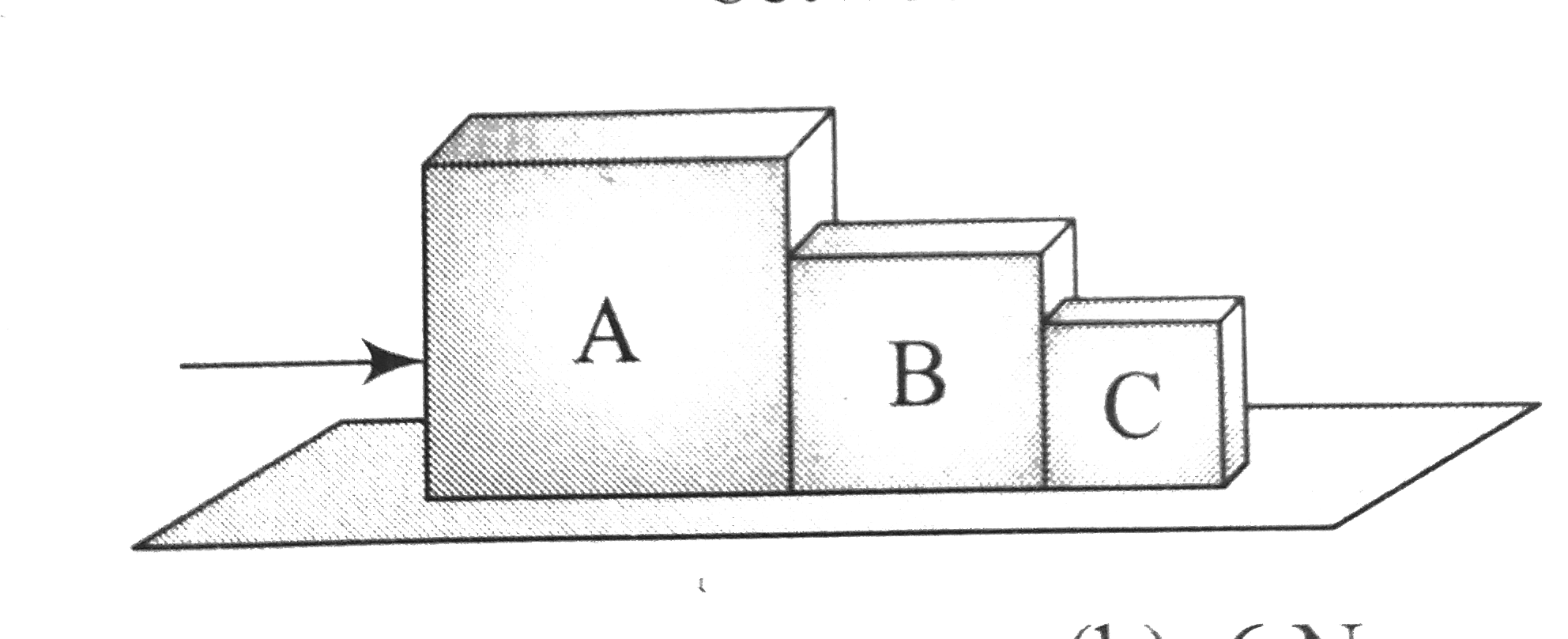When surfaces in contact are…..friction between them….instead of….. .
To solve the fill-in-the-blank question regarding friction between surfaces in contact, we can follow these steps:
Step 1: Identify the Context
We need to understand the relationship between the smoothness of surfaces in contact and the frictional force that arises between them.
Step 2: Analyze the Smoothness of Surfaces
When surfaces are described as "smooth," it generally implies that they have a low coefficient of friction. However, the question suggests a counterintuitive scenario where increased smoothness leads to increased friction.
Step 3: Fill in the Blanks
Based on the analysis, we can fill in the blanks as follows:
- When surfaces in contact are too smooth, friction between them increases instead of decreasing.
Step 4: Explanation
The reasoning behind this is that while smoother surfaces typically reduce friction, if they are excessively smooth, it can lead to an increase in the effective contact area at a microscopic level, which can enhance the intermolecular forces between the surfaces. Thus, instead of the expected decrease in friction, we observe an increase.
Final Answer
When surfaces in contact are too smooth, friction between them increases instead of decreasing.
---
We need to understand the relationship between the smoothness of surfaces in contact and the frictional force that arises between them.
When surfaces are described as "smooth," it generally implies that they have a low coefficient of friction. However, the question suggests a counterintuitive scenario where increased smoothness leads to increased friction.
Based on the analysis, we can fill in the blanks as follows:
- When surfaces in contact are too smooth, friction between them increases instead of decreasing.
The reasoning behind this is that while smoother surfaces typically reduce friction, if they are excessively smooth, it can lead to an increase in the effective contact area at a microscopic level, which can enhance the intermolecular forces between the surfaces. Thus, instead of the expected decrease in friction, we observe an increase.
When surfaces in contact are too smooth, friction between them increases instead of decreasing.
Topper's Solved these Questions
- LAWS OF MOTIONBOOK - PRADEEPCHAPTER - LAWS OF MOTIONEXERCISE - Problems for practice
112 Videos
- LAWS OF MOTIONBOOK - PRADEEPCHAPTER - LAWS OF MOTIONEXERCISE - JEE (Main and Advanced)/ Medical Entrance Special
93 Videos
- LAWS OF MOTIONBOOK - PRADEEPCHAPTER - LAWS OF MOTIONEXERCISE - Multiple Choice Questions
42 Videos
- KINEMATICSBOOK - PRADEEPCHAPTER - KINEMATICSEXERCISE - 1 NCERT Comprehension
4 Videos
- MATHEMATICAL TOOLSBOOK - PRADEEPCHAPTER - MATHEMATICAL TOOLSEXERCISE - Fill in the blanks
5 Videos
Similar Questions
A 20 gram bullet moving at 300m/s stops after penetrating 3cm of bone. Calculate the average force exerted by the bullet .
View SolutionThree blocks A , B and C of masses 4kg , 2kg and 1kg respectively are in contact on a frictionless surface, as shown. If a force of 14Nisappliedonthe4kgblock,thenthecontactforcebetweenAandB is.

View SolutionAn external force is required to keep a body in uniform motion This statement was given by.
View SolutionWhen a body is subjected to a uniform acceleratuib, it alwaus moves in a straight line.
Straight line motion is the natural tendency of the body.
View Solution(a+b)2+(a−b)2=….
View SolutionCoefficient of limiting frictions between any two surfaces in contact is ..............….. force of …….......... and …….............. between them.
View SolutionFriction between any two surfaces in contact is the force that opposes the relative motion between them The force of limiting friction (F) between any two surfaces in contact is directly proportional to the normal reaction (R) between them F prop R or F = mu R where mu is coefficient of limiting friction If theta is angle of friction then mu = tan theta A horizontal force of 1.2kg is applied on a 1.5kg block which rests on a horizontal surface If the coefficient of friction is 0.3 force of friction is .
View SolutionThe angle of friction between two surface in contact is 60∘ What is the cofficient of friction between them .
View SolutionIf we imagine ideally smooth surfaces and it they are kept in contact, the frictional force acting between them is .
View Solutionदो सम्पर्क तलो के बीच घर्षण गुणांक 1/√3 है, उनके बीच स्थैतिक घर्षण कोण क्या है?
View Solutionदो सम्पर्क तलो के बीच घर्षण गुणांक √3 है, उनके बीच स्थैतिक घर्षण कोण क्या है?
View Solutionदो सम्पर्क तलो के बीच घर्षण कोण 30∘ है। उनके बीच स्थैतिक घर्षण गुणांक कितना होगा?
View SolutionIn a machine, a block continously slides forward and backward on a horizontal platform. When lubricating oil is applied to their surfaces n contact, then the friction between them
View SolutionIf we imagine two ideally smooth surfaces & if they are kept in contact, the frictional force acting between them is,
View SolutionIf we imagine two ideally smooth surfaces & if they are kept in contact, the frictional force acting between them is,
View SolutionFriction opposes _______ between surfaces in contact.
View Solution

